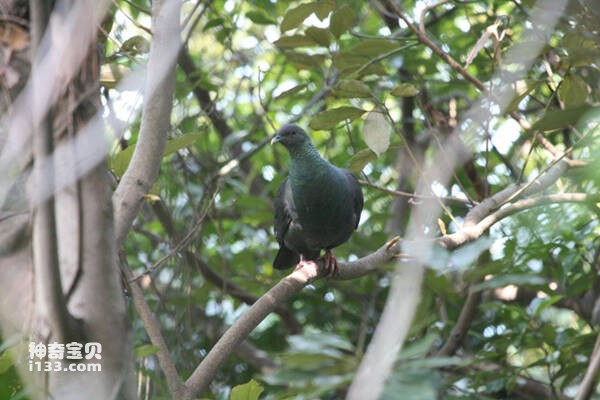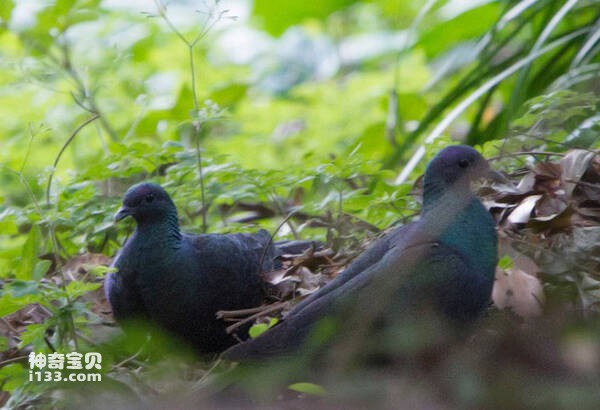Columba janthina
IUCN
LCBasic Information
Scientific classification
- name:Columba janthina
- Scientific Name:Columba janthina,Japanese Wood Pigeon
- Outline:Landfowl
- Family:P.Order P.family P.genus
Vital signs
- length:40-43CM
- Weight:No textual research information is available
- lifetime:No textual research information is available
Feature
It's a near-black wood pigeon
Distribution and Habitat
Country of origin: Japan and Korea. Wandering: Taiwan, China. It is an uncommon native resident bird in Japan, and is found on small islands outside of Honshu, Shikoku, and Kyushu, south through the Nansei Islands to Yaeyama Islands, and Izu Islands to Ogasawara and Iwo Islands. Also living on small islands off the southern coast of Korea, east of Russia, Shandong of China, and Taiwan have been recorded (possibly as loiters).
It inhabits dense subtropical forests and warm temperate evergreen broad-leaved forests and relies heavily on mature forests. It lives mainly in dense forests on islands and coasts. It is often active in trees or on the ground in the forest.
Appearance
The body length is 400-430 mm, the rostrum 18-21 mm, the wings 213-242 mm, the tail 153-177 mm, and the tarsometatarsus 30-35 mm. Male bird body SLATE black. The feathers on the head, back and waist have a purple metallic luster, and the back neck and chest have a metallic green luster. The upper cover of the wings and the rest of the lower body have weak luster, which is green or purple depending on the light. The underback, waist, shoulders and upper wing coverings also have bronze luster. Underwing cover, flight and tail feathers SLATE black. The female is similar to the male, but the plumage is not as bright and shiny as that of the male. Iris brown, mouth dark blue, feet and toes red.
Beak short, base mostly soft, waxy; Well-developed wings, good at flying; The tail is short and round; The legs are short, unwebbed, and the hind toes are at the same level as the first three toes or are missing.
Details
The Japanese Wood Pigeon (Columba janthina) has three subspecies.

Black wood pigeons are resident birds. Sexually timid and unapproachable. It is a social bird that gathers in small groups of 20 or 30 birds. Due to environmental damage, the population is endangered, and only smaller groups or pairs or even individual pigeons can be seen. It is a very cautious pigeon that lives almost entirely arboreal and spends most of its time hiding in the leaves of tall trees. If it takes off, its wings will generate great power, and the flight will be agile and fast. It will stand at a certain height and make a call, which is a long oo-woo sound and a bleating call during courtship. It mainly feeds on fruits and seeds of camellia and other plants.
The breeding season is from May to July. Breed in pairs. Nest in a tree, tree hole, or cave. Each litter lays 1 egg. The size of the egg is 42 x 31 mm. The egg is white in color and smooth without spots.

The global population size of the black pigeon has not been quantified, but the species is described as uncommon. Trend demonstration: No data on population trends; However, the species may be declining due to habitat degradation and hunting. While still relatively common on the Japanese island of Izu, it has been significantly reduced there since the 1950s, and is thought to have decreased on Okinawa in the 1980s due to forestry activities. It is estimated that there are only 30-40 individuals of the subspecies on Ogasawara, but the status of the subspecies on the Ivo Islands remains unknown (2005).
Listed on the International Union for Conservation of Nature (IUCN) 2016 Red List of Threatened Species ver 3.1 - Near Threatened (NT).
Protect wild animals and eliminate wild meat.
Maintaining ecological balance is everyone's responsibility!
FAQ
What is the Black Wood Pigeon?
The Black Wood Pigeon usually refers to a pigeon species found in East Asia, often characterized by its dark gray to blackish plumage with a bluish or purplish sheen.Where does the Black Wood Pigeon typically live?
These pigeons inhabit warm, humid forests and mountainous or island regions with dense tree cover, particularly in southern Japan, Taiwan, and some coastal islands in East and Southeast Asia.What does the Black Wood Pigeon eat?
Black Wood Pigeons primarily feed on plant-based foods such as fruits, seeds, and nuts. They may also consume berries and buds. In times of food scarcity, they may supplement their diet with insects.How do Black Wood Pigeons breed?
They usually breed in the spring and summer, constructing nests in trees. A typical clutch consists of 1–2 eggs, with both parents sharing incubation and chick-rearing duties. During the breeding season, males may perform courtship displays to attract females.What is the conservation status of the Black Wood Pigeon?
Due to habitat loss, deforestation, and human disturbances, some local populations have been declining. The exact conservation status varies by region, and in certain areas, the Black Wood Pigeon is considered a species of concern or under threat.








